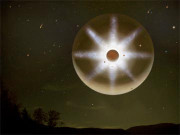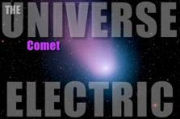|
|
|
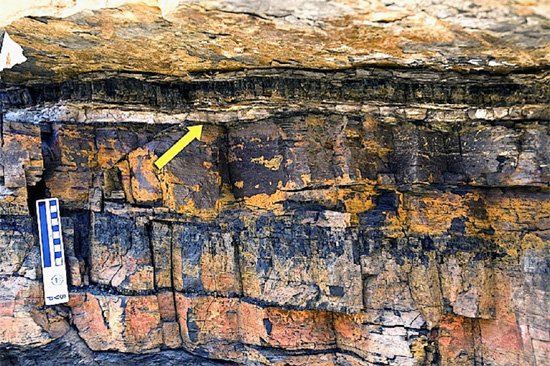
The so-called K-T
(Cretaceous-Tertiary) boundary layer
near Trinidad, Colorado.
Credit: Mark Ryan
Darwin, DNA, and Dogma
May
06, 2011
Mind breaking new thoughts are
that DNA (our species blueprint)
changes dramatically and immediately
given extreme provocation.
Darwin was a genius in his time.
Young inquisitive years were spent,
short bed cramped, on the salty
survey barque H.M.S. Beagle. This
allowed him hero status on his
return to foggy London in 1836.
Darwin's exciting observations of
mysterious jungles and misty
Brazilian mountain ranges lent
glamour to his jolting conclusions.
Against this rallied Bishop Usher's
crusty thoughts on a "creation"
confined to a five thousand year
history of the world. Usher's
viewpoint became the subject of
jokes amongst the cynical, sherry
sipping Victorians. All creationism was swept
before the Darwin wunderkind and the
so-called "age of reason".
Together with Hutton and Lyle,
Darwin revolutionized existing
ideas, such as the age of the world,
and set in concrete what is now
called Uniformitarianism. Adding
extensive amounts of time, with slow
inexorable changes and
snail-like progress, genteelly now
explained all change in geology and
biology. Suddenly the world was
millions of years old.
Darwin got it wrong, though. Today,
the Holy Grail of most school and
university education 'rocks in' as
Darwin. In the annals of modern
science he has the same impeccable
status as the Bible held before we
became a computer driven, science
worshipping society. Like most
graspings for certainty that humans
cling to, his once
bold and unique concepts have been shown to
be not just dubious, but very dubious
to badly
wrong.
Like most dogma driven
investments, they lurch on until
their advocates have departed old
and grey, replete in their
delusions.
Hang on. Everyone knows the Theory
of Evolution is proven science. I've
heard that saying somewhere before.
A favourite line from our dogmatic
Welsh leader. Of course, if you
collect a gang of peer reviewed
papers, who necessarily have the
same viewpoint, they will all agree.
However, what did Darwin postulate
that was unique? It was the theory
of evolution by Natural Selection
that was his distinguishing
brainchild.
Survival of the fittest. You know,
the one left standing after a brawl
at the local footy club. All very
well, but blind Freddy knows what a
polyglot of personalities we
'survivors' are. Not many aspiring
fit bodies seen down at the
Mornington yacht club.
Somehow, this paradigm has become
twisted into a conundrum where the
living organism persistently adapts
to circumstances and steadily works
its way up the evolutionary ladder.
It specifically claims genetic
changes occur from a bit by bit
competitive process. Darwin dogma
had the high five.
Not only organisms, but
organizations grandly aspire towards
this evolutionary excellence. We
thus have bacteria seeking to become
superbugs, humans reaching out for
sharper athletic records and
corporations relentlessly seeking
perfection in human relationships.
The more highly evolved team leader
rather than the brutal boss. Somehow
they believe that Natural selection
has chosen their favourite child to
become great by a competitive,
subtle genius.
So amidst our blind acceptance of
Darwin's theory laden belief what
does change species? It is not slow
methodical evolution. New York
University Geologist Michael Rampino
concludes: 'Charles Darwin's theory
of gradual evolution is not
supported by geological history'.
The science of polyploidy, with its
same sex division, allows rapid
changes. Animal species such as
Salmon and some plants and insects
(e.g. drosophila) form new species
when subjected to radical chemical
(e.g. colchicine) and radiation
insults (X-rays, ultraviolet, alpha,
and beta rays). This curiously
personifies cosmic synchrotron
radiation.
Extinction is a chaotic, radical and
catastrophic process that DNA
intelligently and instantaneously
adapts to in genetic mega leaps.
What provokes the DNA to
intelligently leap? DNA surprisingly
has an inbuilt intuitive but
'intelligent brain' that reacts to
sudden assaults on its existing
electromagnetic harmony. For a few
thousand years this may remain
relatively static. Then an invading
electromagnetic pulse in the shape
of a comet, coronal mass ejection
(CME), supernova or planet in
disturbed motion, reduces the
environment to chaos. Synchrotron
radiation in the form of X-rays,
ultraviolet light, and positive and
negative ions pours down and
infiltrates the DNA structure.
An electromagnetic variant locks in.
A new harmonic Lamor frequency is
established. The DNA sees, reads and
immediately creates new species
under this defining electromagnetic
spectrum. The old is wiped out, the
genetically modified survivors
reappear with their optimized DNA
embracing an entirely new animal or
plant species. Voila! The DNA
evolves, not by natural selection
but by genetic adaptive mega leaps.
Just as DNA can repair itself so it
'knows' the correct formula for the
new electromagnetic environment. It
is not a mutation but an intelligent
creation. DNA is no headless dummy.
Without exception there has never
been a new species without a
preceding mass extinction. As
Harvard paleontologist S.J. Gould
notes: 'Fossil records demonstrate
that a species remains unchanged for
millions of years before abruptly
disappearing. Gradualism is not a
fact of nature. Most new species
appear with a bang. Nature does take
leaps'.
There are no intermediate species.
Paleontologists know this and talk
of the 'K-T' and other defining
extinction boundaries. Berkeley
nuclear scientist, Rick Firestone,
talks of the black mat that
separates the demise of the mammoths
and Clovis Indians from the next
generation of species. The skulls of
extinct mammoths and numerous other
life forms are pitted with
radioactive iridium and carbon
spherules. Theirs was a catastrophic
demise.
This is not necessarily a worldwide
but always a widespread extinction.
Sometimes enclaves, such as in
Australia, survive with their own
unique species. Occasionally the
changes are momentous as from lizard
to dinosaur. Sometimes they are mild
as in mammoth to elephant. Always
they are extraordinary genetic
leaps. DNA is an incredible,
intelligent and mysterious adaptive
life force.
Note: On a filming expedition to
county Kent in England I
thoughtfully absorbed his pristine
country manor. It was like an iconic
national shrine. The local ale
swilling villagers would not hear a
word against him. And rightly so. He
was a man for his time.
Peter Mungo Jupp
www.ancientdestructions.com
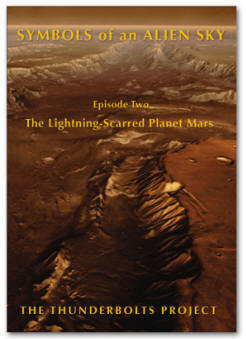 New
DVD New
DVD
The Lightning-Scarred
Planet Mars
A video documentary that could
change everything you thought you
knew about ancient times and
symbols. In this second episode of
Symbols of an Alien Sky, David
Talbott takes the viewer on an
odyssey across the surface of Mars.
Exploring feature after feature of
the planet, he finds that only
electric arcs could produce the
observed patterns. The high
resolution images reveal massive
channels and gouges, great mounds,
and crater chains, none finding an
explanation in traditional geology,
but all matching the scars from
electric discharge experiments in
the laboratory. (Approximately 85
minutes)
Video Selections
Order Link
|
|
|
|
|
|
|
|
|
YouTube video, first glimpses of Episode Two in the "Symbols of an Alien Sky"
series.
|
|
|
|
|
|
|
Three ebooks in the Universe Electric series are
now available. Consistently
praised for easily understandable text and exquisite graphics.
|
|
|
|
|
|
|
|
|
|

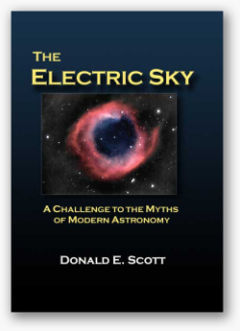
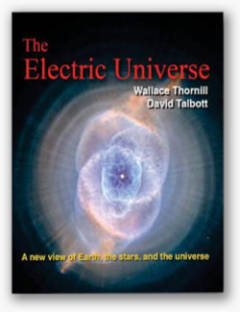


 New
DVD
New
DVD